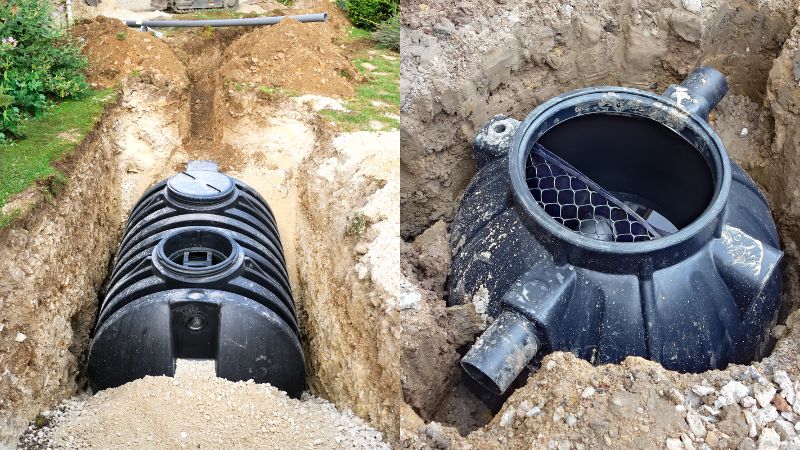How To Choose The Perfect Septic Tank – Selecting the perfect septic tank is crucial for a well-functioning and efficient waste management system for your home. With various types, sizes, and materials available, making the right choice can be overwhelming. Your decision impacts not only your property’s sanitation but also its long-term value and environmental footprint. Factors such as household size, soil type, and local regulations play significant roles in determining the best septic tank for your needs. Understanding the pros and cons of different septic tank options, from concrete to plastic, can help you make an informed decision that suits your home and budget. Additionally, considering the installation process, maintenance requirements, and potential future expansions can ensure you invest in a system that will serve your household effectively for years to come. In this guide, we’ll walk you through the key considerations to help you choose the ideal septic tank for your home.
How To Choose The Perfect Septic Tank?
1. Understand the Different Types of Septic Tanks
There are various types of septic tanks available, each with its own advantages and disadvantages. The most common types include concrete, plastic, and fiberglass tanks. Concrete tanks are known for their durability and longevity, making them a popular choice for many homeowners. However, they are heavy and may require more effort to install. Plastic tanks, on the other hand, are lightweight and easier to install but may not be as durable as concrete. Fiberglass tanks offer a balance between the two, being both durable and lightweight. Understanding the pros and cons of each type can help you determine which one is best suited for your needs.
2. Consider the Material of the Septic Tank
The material of your septic tank plays a crucial role in its durability, maintenance, and lifespan. Concrete tanks are highly durable and can last for decades, but they are prone to cracking over time if not properly maintained. Plastic tanks are resistant to rust and corrosion, making them a good choice for areas with high groundwater levels. However, they can be more susceptible to damage from external forces. Fiberglass tanks are resistant to both corrosion and cracking, making them a durable and low-maintenance option. When choosing the material, consider the environmental conditions of your property and the level of maintenance you are willing to undertake.
3. Determine the Right Size for Your Septic Tank
Selecting the correct size for your septic tank is crucial for its efficiency and longevity. The size of the tank should be based on the number of bedrooms in your home and the average water usage. A larger tank is necessary for homes with more occupants to prevent frequent pumping and overflow. For example, a three-bedroom home typically requires a tank with a capacity of 1,000 gallons, while a larger home may require a tank of 1,500 gallons or more. Consulting with a professional to assess your household’s specific needs can help ensure you choose the right size tank for your property.
Also Read:- Different Types Of Septic Systems
4. Adhere to Local Regulations and Permits
Before installing a septic tank, it’s essential to check your local regulations and obtain the necessary permits. Different regions have specific requirements for septic tank installation, including minimum distances from wells, property lines, and bodies of water. Failing to comply with these regulations can lead to fines, legal issues, and potential health hazards. Additionally, local authorities may require inspections during and after installation to ensure the system meets all safety and environmental standards. Working with a licensed contractor who is familiar with local regulations can help streamline the process and ensure your septic tank is installed correctly.
5. Consider Future Maintenance and Accessibility
Maintenance is a critical factor when choosing a septic tank. Regular pumping, inspections, and proper usage can extend the life of your septic system. Consider the ease of access to the tank for maintenance purposes when selecting its location on your property. Tanks that are difficult to reach may result in higher maintenance costs and increased inconvenience. Additionally, planning for potential future expansions, such as adding more bedrooms or increasing water usage, can help you avoid costly upgrades or replacements down the line. Investing in a high-quality septic tank with easy access can save you time and money in the long run.
6. Evaluate the Cost and Long-Term Investment
The cost of a septic tank goes beyond the initial purchase price. While concrete tanks may have a higher upfront cost, they offer long-term durability and lower maintenance costs. Plastic and fiberglass tanks might be more affordable initially, but they could require more frequent maintenance or replacement over time. It’s important to weigh the long-term investment of each option, considering not only the installation costs but also the potential expenses related to maintenance, repairs, and lifespan. Choosing a septic tank that offers the best balance between cost and durability will provide you with peace of mind and reliable performance for years to come.
Conclusion
Choosing the perfect septic tank involves more than just selecting the right size. It requires careful consideration of material, installation, and long-term maintenance. By understanding your household’s specific needs and the environmental conditions of your property, you can make an informed decision that ensures efficient waste management and lasting performance. Whether you opt for a concrete, plastic, or fiberglass tank, investing time in research and consultation with professionals will pay off in the long run. With the right septic tank, you can enjoy a reliable and eco-friendly waste management system for years to come.
FAQs
What is the most durable material for a septic tank?
Concrete is generally considered the most durable material for septic tanks, offering long-term reliability and resistance to damage.
How do I determine the right size septic tank for my home?
The size of your septic tank should be based on the number of bedrooms and expected water usage in your home. Consulting a professional can help you choose the correct size.


